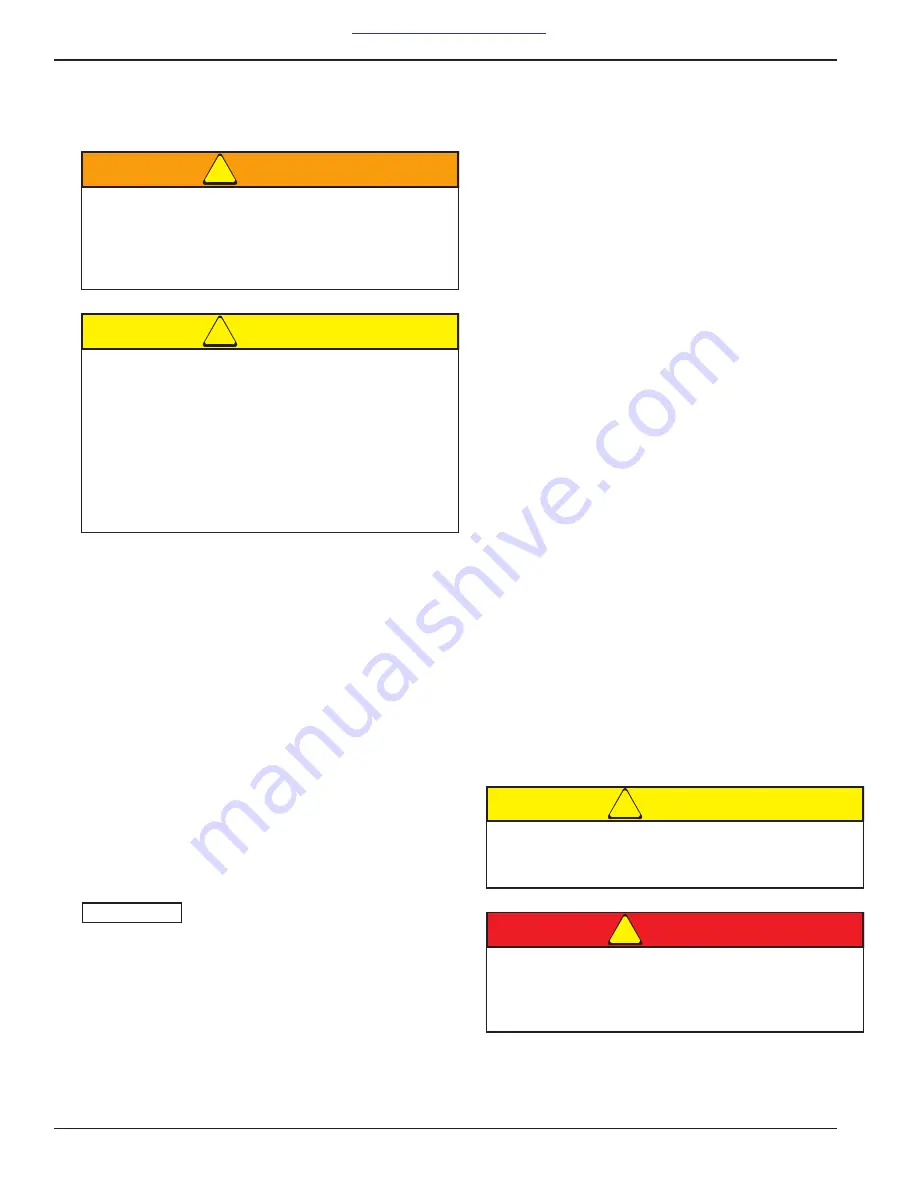
3-4
F-1044-0719
OPERATING INSTRUCTIONS
Tractor and Semitrailer
Check-Out
WARNING
CAUTION
1.
Check the operation of all lights and signals on the
semitrailer for proper response to switch positions
(stop, right turn, left turn, and clearance). Check
operation of remote function if present.
2.
Check tire inflation; adjust as needed to the pressure
listed on the semitrailer VIN plate, located on the
front of the semitrailer.
3.
Check tractor/semitrailer rig for air leaks. If air leak is
found, repair the defect before transporting.
4.
Check the oil in each hub for proper level and
contamination. If hubs are contaminated with water,
dirt or other foreign material, clean before
transporting.
5.
Check tractor air pressure. Pressure must not fall
below 90 psi, even after activating brakes a couple of
times. Set parking brake and carefully remove all
wheel chocks. Set emergency brake and try pulling
forward. The semitrailer wheels must not rotate.
IMPORTANT
Do not transport until defect or defects are repaired.
Towing the Semitrailer
Driving the towing vehicle with the semitrailer coupled
behind requires constant attention to the overall length of
the combination. The “hinged-in-the-middle”
configuration of the tractor and semitrailer, load, and
weight affect performance. Turning, passing,
acceleration, braking, stopping, and backup require
special considerations. When executing steep grades or
turning tight curves, the semitrailer must not be allowed
to push the towing vehicle, or jack knifing the semitrailer
with the towing vehicle may result. Application of the
semitrailer brakes will help prevent this pushing. Braking
should begin before descending a hill or attempting a
curve, to assure control.
1.
Make a moving test of the semitrailer brakes at low
and medium speeds before traveling at highway
speed.
The Anti-Lock Brake System (ABS) warning lamp should
come on when power is supplied to the ABS by turning
the tractor keyswitch on. The warning lamp should go off
once the semitrailer exceeds 4 mph. If the warning lamp
does not go off, a fault exists in the semitrailer ABS.
2.
Monitor the air pressure gauge on the dash of the
towing vehicle. Pressure should not fall below 90 psi
at any time.
3.
The semitrailer wheels track to the inside of the
towing vehicle during turns. Thus, turning corners
requires a wide swing to prevent “curb hopping”, and
to allow the semitrailer wheels to clear any obstacle
on the inside of the corner.
4.
To stop, use a gradual and smooth application of
brakes. If grabbing occurs, apply less pressure -
grabbing brakes are not efficient.
5.
Backing should be done with care. Semitrailer length
and allowable space must be taken into
consideration when backing the semitrailer.
CAUTION
DANGER
Failure to properly set and check parking brake,
and chock wheels when parking and during
storage, could allow movement of the
truck/semitrailer rig resulting in serious personal
injury, death, or damage to property in its path.
1.
Park stand legs must be fully retracted and
secured with pins before operating or moving
semitrailer.
2.
Do not park bottom dump with material in
hopper and park stand legs down. Failure to
follow this will result in damage to park stand
legs and repeated failure to follow this rule
will shorten the service life of the park stand.
3.
Do not attempt to open gate with legs down.
If a fault exists in the semitrailer ABS, normal
braking will occur, but wheels may lock. Service
the ABS as soon as possible.
Always check behind and under the truck and
semitrailer for persons or objects before moving.
Failure to check can lead to serious personal
injury or death to others, or damage to property.















































